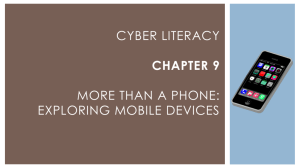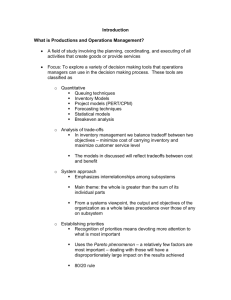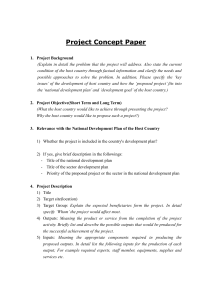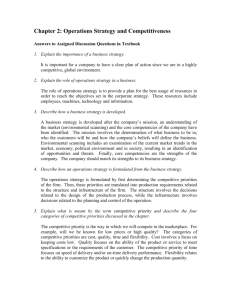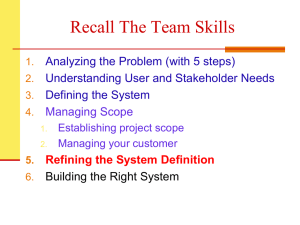LOGIC MODEL Worksheet (Table format)
advertisement
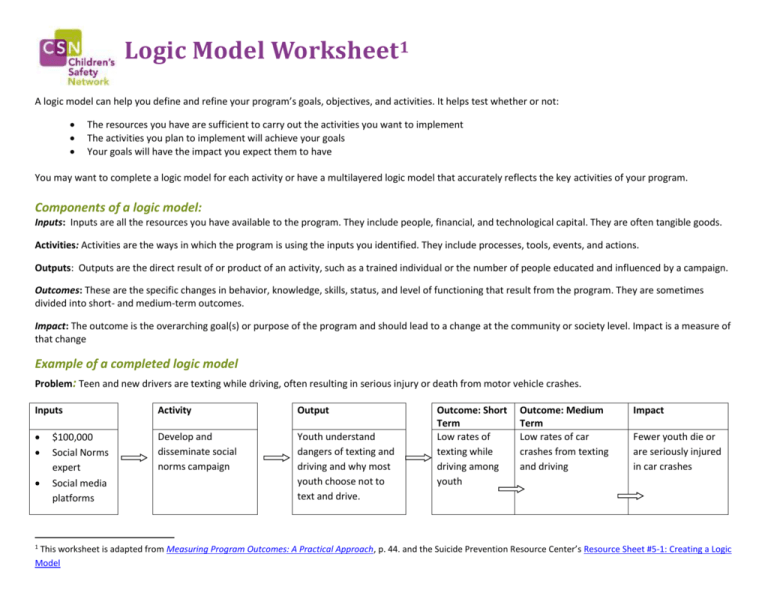
Logic Model Worksheet1 A logic model can help you define and refine your program’s goals, objectives, and activities. It helps test whether or not: The resources you have are sufficient to carry out the activities you want to implement The activities you plan to implement will achieve your goals Your goals will have the impact you expect them to have You may want to complete a logic model for each activity or have a multilayered logic model that accurately reflects the key activities of your program. Components of a logic model: Inputs: Inputs are all the resources you have available to the program. They include people, financial, and technological capital. They are often tangible goods. Activities: Activities are the ways in which the program is using the inputs you identified. They include processes, tools, events, and actions. Outputs: Outputs are the direct result of or product of an activity, such as a trained individual or the number of people educated and influenced by a campaign. Outcomes: These are the specific changes in behavior, knowledge, skills, status, and level of functioning that result from the program. They are sometimes divided into short- and medium-term outcomes. Impact: The outcome is the overarching goal(s) or purpose of the program and should lead to a change at the community or society level. Impact is a measure of that change Example of a completed logic model Problem: Teen and new drivers are texting while driving, often resulting in serious injury or death from motor vehicle crashes. Inputs Activity Output Develop and disseminate social norms campaign Youth understand dangers of texting and driving and why most youth choose not to text and drive. 1 $100,000 Social Norms expert Social media platforms Outcome: Short Term Low rates of texting while driving among youth Outcome: Medium Term Low rates of car crashes from texting and driving Impact Fewer youth die or are seriously injured in car crashes This worksheet is adapted from Measuring Program Outcomes: A Practical Approach, p. 44. and the Suicide Prevention Resource Center’s Resource Sheet #5-1: Creating a Logic Model Problem Statement: Outcomes -- Impact Inputs Activities Outputs Outcome: Short Term Outcome: Medium Term Click here to enter text. Click here to enter text. Click here to enter text. Click here to enter text. Click here to enter text. Click here to enter text. Click here to enter text. Click here to enter text. Click here to enter text. Click here to enter text. Click here to enter text. Click here to enter text. Click here to enter text. Click here to enter text. Click here to enter text. Click here to enter text. Click here to enter text. Click here to enter text. Click here to enter text. Click here to enter text. Click here to enter text. Click here to enter text. Click here to enter text. Click here to enter text. Click here to enter text. Click here to enter text. Impact Click here to enter text. Click here to enter text. Click here to enter text. Click here to enter text. Click here to enter text. Assumptions External Factors Click here to enter text. Click here to enter text.





